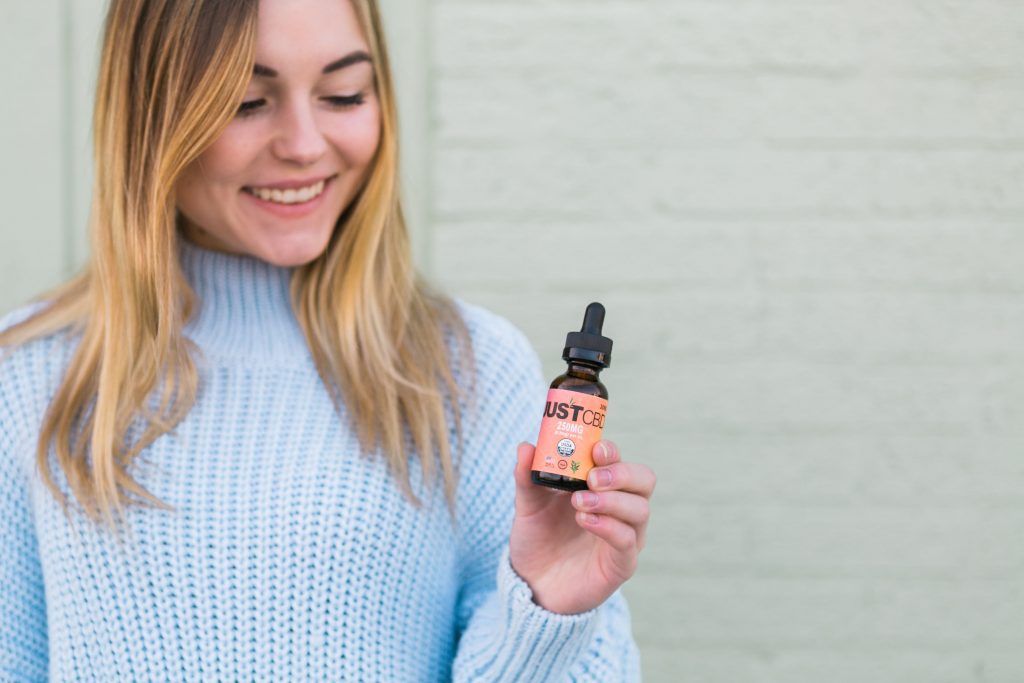cbd isolate coconut oil 
Grape, Mango, Lemon & more delicious flavors for your Just CBD cartridge. Simply screw it into your vape pen and enjoy. #JustCBD #Vape #Cartridge #CBD
— JustCBD (@JustCbd) May 12, 2020
Get yours here https://t.co/uiX4TVA24l pic.twitter.com/XxTLUBJcS1
Content
- Endocannabinoid System: 12 Ways To Support It Without Cannabis
- Endocannabinoid
- Free 5-day Cbd Crash Course
- What Happens If Your Body Doesn’t Make Enough Endocannabinoids?
- There Are Two Main Types Of Receptor In Your Endocannabinoid System
- Homeostasis Endocannabinoid System, Explained
- There Are Also Different Types Of Endocannabinoid
These results might concur with anecdotal proof suggesting that smoking cannabis impairs brief-time period reminiscence. Consistent with this discovering, mice without the CB1 receptor show enhanced reminiscence and lengthy-time period potentiation indicating that the endocannabinoid system may play a pivotal role in the extinction of old reminiscences. Taken together, these findings counsel CBD E-Juice that the consequences of endocannabinoids on the varied mind networks concerned in studying and reminiscence may vary. Cannabinoid binding sites exist all through the central and peripheral nervous techniques. The two most related receptors for cannabinoids are the CB1 and CB2 receptors, that are expressed predominantly within the mind and immune system respectively. Here we reveal that this compound is a selected cannabinoid agonist and exerts its action immediately by way of the cannabinoid receptors. Anandamide particularly binds to membranes from cells transiently (COS) or stably (Chinese hamster ovary) transfected with an expression plasmid carrying the cannabinoid receptor DNA but not to membranes from management nontransfected cells. Moreover, anandamide inhibited the forskolin-stimulated adenylate cyclase within Full Spectrum CBD Tincture the transfected cells and in cells that naturally specific cannabinoid receptors (N18TG2 neuroblastoma) but not in management nontransfected cells. As with exogenous cannabinoids, the inhibition by anandamide of the forskolin-stimulated adenylate cyclase was blocked by treatment with pertussis toxin. These data point out that anandamide is an endogenous agonist which will function a genuine neurotransmitter for the cannabinoid receptor. Presently, the Food and Drug Administration has solely permitted hashish, whether outstanding in THC or CBD, for the treatment of two specific forms of epilepsy. However, every state includes a listing of qualifying situations that stand to learn from the activation of CB1 and CB2 receptors. These two receptors are forty four% identical within the amino acid sequences they contain, which is why is essential to talk with a health care provider or licensed professional to determine the easiest way to treat the physique with hashish. Even though the CB1 receptors work with the central nervous system, CB2 isn’t usually found on any neurons but these in the hippocampus and the brainstem. Microglia, or non-neuronal brain cells, tend to launch CB2 receptors when the individual experiences irritation or is injured.
Endocannabinoid System: 12 Ways To Support It Without Cannabis
Further, the useful effect of palmitoylethanolamide, in addition to that of the active cannabinoids, was effectively antagonized by anandamide. Two cannabinoid receptors, designated neuronal (or CB1) and peripheral (or CB2), have recently been cloned. Activation of CB1 receptors results in inhibition of adenylate cyclase and N-sort voltage-dependent Ca2+ channels.
Endocannabinoid
Here we present, utilizing a CB2 transfected Chinese hamster ovary cell line, that this receptor binds a variety of tricyclic cannabinoid ligands as well as the endogenous ligand anandamide. Activation of the CB2 receptor by varied tricyclic cannabinoids inhibits adenylate cyclase exercise and this inhibition is pertussis toxin delicate indicating that this receptor is coupled to the Gi/G(o) GTP-binding proteins. Interestingly, contrary to results with CB1, anandamide didn't inhibit the CB2 coupled adenylate cyclase activity and delta 9-tetrahydrocannabinol had solely marginal results. These outcomes characterize the CB2 receptor as a functional and distinctive member of the cannabinoid receptor family. Some scientists hypothesize that the CB2 receptor evolved as a protection mechanism.
Free 5-day Cbd Crash Course
Very little is known about endogenous molecules and mechanisms capable of modulating mast cell activation. Palmitoylethanolamide, present in peripheral tissues, has been proposed to behave as a neighborhood autacoid capable of downregulating mast cell activation and irritation. A cognate N-acylamide, anandamide, the ethanolamide of arachidonic acid, happens in brain and is a candidate endogenous agonist for the central cannabinoid receptor (CB1). The phytocannabinoids contained in hashish can be utilized to supplement this deficiency. By stimulating and supporting your endocannabinoid system one can find reduction from a multitude of illnesses and circumstances. Evidence for the function of the endocannabinoid system in food-in search of conduct comes from a variety of cannabinoid studies. Emerging knowledge suggests that THC acts by way of CB1 receptors in the hypothalamic nuclei to instantly enhance urge for food. This is the enzyme liable for breaking down endocannabinoid anandamide. As a end result, CBD can create larger levels of anandamide, which targets the cannabinoid receptors with larger affinity than CBD but without psychoactive results of THC. Unlike the receptors associating with most neurotransmitters, the CB1 receptor typically appears within the presynapse neuron. When the CB1 receptor activates, it prevents additional release of neurotransmitters. During the Eighties, research into the impact of endocannabinoids on the human mind found that there was a particular binding website for them. In the early Nineteen Nineties, the two main cannabinoid receptors noticed identification and cloning. Since this discovery, researchers have realized extra concerning the endocannabinoid system and mechanisms for its involvement in numerous illnesses. By selectively internalizing completely different receptors, the mind might restrict the manufacturing of particular endocannabinoids to favor a time scale in accordance with its wants. Once released into the extracellular area by a putative endocannabinoid transporter, messengers are susceptible to glial cell inactivation. While arachidonic acid is a substrate for leukotriene and prostaglandin synthesis, it's unclear whether this degradative byproduct has unique capabilities within the central nervous system. A neuropharmacological study demonstrated that an inhibitor of FAAH (URB597) selectively increases anandamide levels within the brain of rodents and primates.
What Happens If Your Body Doesn’t Make Enough Endocannabinoids?
In this guide we will delve into the position of the ECS and take a look at the various kinds of cannabinoids, CB1 and CB2 receptors, and how all of them hyperlink together, as well as how cannabis might help maintain the endocannabinoid system working efficiently. Small and punctiliously thought-out doses “drive” our physique to provide extra of its endogenous cannabinoids like anandamide and a pair of-AG, and on the same time increase the focus of cannabinoid receptors CB1 and CB2 . It has further been advised that different endocannabinoids, i.e. 2-AG and anandamide, would possibly mediate totally different types of synaptic depression through completely different mechanisms. The study conducted with the mattress nucleus of the stria terminalis discovered that the endurance of the depressant results was mediated by two different signaling pathways based mostly on the type of receptor activated. These findings present the brain a direct mechanism to selectively inhibit neuronal excitability over variable time scales.  Dr. Raphael Mechoulam is responsible for discovering AEA in 1992, and his research within the mid 1960's led to his discovery of THC. In 1990, a staff led by Lisa Matsuda on the National Institute of Mental Health within the United States mapped the DNA sequence that encodes cannabinoid receptors in the brain. This study was eye-opening and led to G-protein-coupled receptors, called endocannabinoids, like CB1 and CB2 to be immediately recognized.
Dr. Raphael Mechoulam is responsible for discovering AEA in 1992, and his research within the mid 1960's led to his discovery of THC. In 1990, a staff led by Lisa Matsuda on the National Institute of Mental Health within the United States mapped the DNA sequence that encodes cannabinoid receptors in the brain. This study was eye-opening and led to G-protein-coupled receptors, called endocannabinoids, like CB1 and CB2 to be immediately recognized.
There Are Two Main Types Of Receptor In Your Endocannabinoid System
Later, we realized how THC interacts with the mind when researchers discovered cannabinoid receptors. Scientists have been puzzled when they realized that these have been some of the most plentiful neurotransmitter receptors discovered in the mind. This realization was quickly followed by the invention of the endocannabinoid system when the first endogenous cannabinoid, anandamide, was recognized within the early Nineties. However, the CB1 receptors are predominantly found in the central nervous system – your mind and spinal twine; the CB2 receptors are predominantly discovered within the immune system, specifically the white blood cells. Research has shown that small doses of cannabinoids from cannabis can signal the physique to make extra endocannabinoids and construct extra cannabinoid receptors. It has a larger affinity for CB1 receptors than CB2 receptors and is metabolized by FAAH into arachidonic acid. 2-AG regulates immune operate, reduces inflammation, has neuroprotective results in glial cells, suppresses seizure activity, and regulates our brain-intestine axis. 2-AG has an extended half-life than AEA and is 200 instances extra highly effective than AEA. It's the main activator of CB2 receptors and is a full agonist for CB1 and CB2 receptors. It is believed that hypothalamic neurons tonically produce endocannabinoids that work to tightly regulate hunger. The amount of endocannabinoids produced is inversely correlated with the amount of leptin in the blood. For instance, mice without leptin not only turn out to be massively obese but express abnormally high levels of hypothalamic endocannabinoids as a compensatory mechanism. Similarly, when these mice had been handled with an endocannabinoid inverse agonists, corresponding to rimonabant, meals intake was lowered.  When the CB1 receptor is knocked out in mice, these animals are typically leaner and fewer hungry than wild-kind mice. A associated research examined the effect of THC on the hedonic (pleasure) value of food and found enhanced dopamine launch in the nucleus accumbens and elevated pleasure-associated conduct after administration of a sucrose answer. While there's want for more research, these outcomes counsel that cannabinoid activity in the hypothalamus and nucleus accumbens is expounded to appetitive, meals-looking for conduct. These are endogenous lipids (that means they are contained inside the body) that have interaction cannabinoid receptors. Though CB1 receptor activation helps the body to experience less ache by inhibiting the signal to the mind, the activation of CB2 receptors has an anti-inflammatory effect. Such approaches may lead to the development of recent medication with analgesic, anxiolytic-like and antidepressant-like results, which are not accompanied by overt signs of abuse legal responsibility. A putative endogenous cannabinoid ligand, arachidonylethanolamide (termed "anandamide"), was isolated just lately from porcine mind.
When the CB1 receptor is knocked out in mice, these animals are typically leaner and fewer hungry than wild-kind mice. A associated research examined the effect of THC on the hedonic (pleasure) value of food and found enhanced dopamine launch in the nucleus accumbens and elevated pleasure-associated conduct after administration of a sucrose answer. While there's want for more research, these outcomes counsel that cannabinoid activity in the hypothalamus and nucleus accumbens is expounded to appetitive, meals-looking for conduct. These are endogenous lipids (that means they are contained inside the body) that have interaction cannabinoid receptors. Though CB1 receptor activation helps the body to experience less ache by inhibiting the signal to the mind, the activation of CB2 receptors has an anti-inflammatory effect. Such approaches may lead to the development of recent medication with analgesic, anxiolytic-like and antidepressant-like results, which are not accompanied by overt signs of abuse legal responsibility. A putative endogenous cannabinoid ligand, arachidonylethanolamide (termed "anandamide"), was isolated just lately from porcine mind.  They assume so because suppresses inflammatory responses and helps neuroprotective responses to mind injuries. The CB2 receptor may additionally help regualte the ache relieving properties of cannabis. THC and CBD both bind to the CB2 receptor, though once more, CBD has a low affinity for it. Many researchers have developed synthetic cannabinoid molecules that can bind specifically to the CB2 receptor and not to the CB1 receptor so as to obtain therapeutic effects of CB2 activation with out inflicting psychoactive unwanted effects. Outside the brain, the endocannabinoid system is among the essential modulators of the autonomic nervous system, the immune system and microcirculation. Endocannabinoids are transported into cells by a particular uptake system and degraded by two properly-characterised enzymes, the fatty acid amide hydrolase and the monoacylglycerol lipase. Recent pharmacological advances have led to the synthesis of cannabinoid receptor agonists and antagonists, anandamide uptake blockers and potent, selective inhibitors of endocannabinoid degradation. Recent advances have specifically linked the endogenous cannabinoid system to alcoholism, and cannabinoid receptor antagonism now emerges as a promising therapeutic various for alcohol dependence and relapse. Mast cells are multifunctional bone marrow-derived cells present in mucosal and connective tissues and in the nervous system, where they play necessary roles in tissue inflammation and in neuroimmune interactions.
They assume so because suppresses inflammatory responses and helps neuroprotective responses to mind injuries. The CB2 receptor may additionally help regualte the ache relieving properties of cannabis. THC and CBD both bind to the CB2 receptor, though once more, CBD has a low affinity for it. Many researchers have developed synthetic cannabinoid molecules that can bind specifically to the CB2 receptor and not to the CB1 receptor so as to obtain therapeutic effects of CB2 activation with out inflicting psychoactive unwanted effects. Outside the brain, the endocannabinoid system is among the essential modulators of the autonomic nervous system, the immune system and microcirculation. Endocannabinoids are transported into cells by a particular uptake system and degraded by two properly-characterised enzymes, the fatty acid amide hydrolase and the monoacylglycerol lipase. Recent pharmacological advances have led to the synthesis of cannabinoid receptor agonists and antagonists, anandamide uptake blockers and potent, selective inhibitors of endocannabinoid degradation. Recent advances have specifically linked the endogenous cannabinoid system to alcoholism, and cannabinoid receptor antagonism now emerges as a promising therapeutic various for alcohol dependence and relapse. Mast cells are multifunctional bone marrow-derived cells present in mucosal and connective tissues and in the nervous system, where they play necessary roles in tissue inflammation and in neuroimmune interactions. 
- The endogenous cannabinoid system is an ubiquitous lipid signalling system that appeared early in evolution and which has necessary regulatory capabilities throughout the body in all vertebrates.
- Outside the mind, the endocannabinoid system is likely one of the crucial modulators of the autonomic nervous system, the immune system and microcirculation.
- They bind to a household of G-protein-coupled receptors, of which the cannabinoid CB1 receptor is densely distributed in areas of the mind associated to motor management, cognition, emotional responses, motivated behaviour and homeostasis.
- The primary endocannabinoids (endogenous cannabis-like substances) are small molecules derived from arachidonic acid, anandamide (arachidonoylethanolamide) and a couple of-arachidonoylglycerol.
In the adult brain, the endocannabinoid system facilitates the neurogenesis of hippocampal granule cells. In the subgranular zone of the dentate gyrus, multipotent neural progenitors (NP) give rise to daughter cells that, over the course of a number of weeks, mature into granule cells whose axons project to and synapse onto dendrites on the CA3 area. As a outcome, hashish, or cannabinoids, have become the main focus in developing new therapies, and the medical use of cannabis has turn out to be a target of public coverage. Our body has completely different sites the place cannabinoids adhere to the floor of cells and the body produces several endocannabinoids which are activated by passing by way of cannabinoid receptors. Depending on the cell, dosage and the location within the physique, this activation causes changes to the cells that end in certain physiological results such as anxiety, euphoria, starvation, pain discount, muscle leisure, and so forth. The Endocannabinoid system is likely one of the most necessary physiologic regulatory systems. It performs a main function in sustaining our well being and helps to maintain our bodies in a state of homeostasis and stability. It assists and facilitates the interplay between totally different cell types all through our bodies, impacting how we feel, think and react. Two of the primary endocannabinoids are Anandamide (AEA) and a couple of arachidonyl glycerol (2-AG). Our bodies have CB1 and CB2 receptors that interact with endocannabinoids and phytocannabinoids. “Abnormal cannabidiol” is believed to create the identical results that common cannabinoids do, but do not activate the CB1 or CB2 receptors. It is powerful enough to decrease the blood pressure and scale back irritation, very similar to CBD. Anandamide, which was the primary endocannabinoid studied by Professor Raphael Mechoulam, is believed to interact with this receptor, discovered in the Central Nervous System. Thanks to our body’s endocannabinoid system, pure cannabinoids from the cannabis plant, similar to CBD and THC, also can bind to your cannabinoid receptors and affect your physique. However, these two cannabinoids work together in a different way along with your physique’s endocannabinoid system. However, in the nervous system the distribution is far more complex and structured, and clearly reflects the significance of this method in synaptic transmission. In some regions, such as the hippocampus, there's a complementary distribution of cannabinoid receptors, endocannabinoid transporters and degradation enzymes. Most consider as a substitute that its capabilities work to maintain endocannabinoids from being broken down, letting them be more practical. It is also attainable that for the reason that science continues to be relatively new that CBD interacts with other neurotransmitters not yet discovered. The CB1 receptor is a part of a gaggle of cell membrane receptors within the physique that is discovered within the nervous system, which accesses practically every space of the mind and nearly every neuron sort. These receptors span the within of every cell wall, and the cannabinoids that come into the physique activate them. At this level, contemplating that CB1 receptors could be found inside and across the cell wall, scientists are unsure of whether the receptors are literally energetic, or if they are ready to make their method back to the floor of the cell. The brain has 100 billion nerve cells, that are inconsistent communication by way of synapses. Nerves ship indicators to these synapses via axons, which are extensions of the nerves. These pathways are liable for cognition, neuronal development, and the regulation of reward and mood methods. Activation of the CB1 receptor is subsequently not only responsible for the euphoric high associated with THC, but also for a wide range of therapeutic benefits like treating nervousness, pain, and submit-traumatic stress dysfunction (PTSD). When endocannabinoids bind to the CB1 and CB2 receptors they permit for 2-method communication between cells. When one thing is out of balance, indicators are sent to the activate the ECS triggering a wide range of biological functions to help appropriate it and create a state of homeostasis throughout the body. As described above, the endogenous cannabinoid system is extensively distributed throughout the physique. In the peripheral tissues the localization of the weather of the endogenous cannabinoid system reflects the distribution of the cell types the place they're situated (e.g. B lymphocytes in spleen and lymph nodes). Cannabinoids bind with these receptors to inhibit inflammation that can be attributable to chronic opioids as well, based on analysis revealed by the American Pain Society. Whenever a molecule binds to both of the cannabinoid receptors, there are particular results that happen within the physique. Some of those effects feel therapeutic, whereas others can inhibit the way in which that the physique features. While CB1 is activating through the usage of THC from an exterior source, the CB2 receptors are only found within the mind when the physique is injured or experiences inflammation. Most of these receptors are positioned within the central nervous system, permitting them to manage brain capabilities and generally pores and skin issues. The endogenous cannabinoid system is an ubiquitous lipid signalling system that appeared early in evolution and which has important regulatory capabilities all through the physique in all vertebrates. The primary endocannabinoids (endogenous cannabis-like substances) are small molecules derived from arachidonic acid, anandamide (arachidonoylethanolamide) and 2-arachidonoylglycerol. They bind to a family of G-protein-coupled receptors, of which the cannabinoid CB1 receptor is densely distributed in areas of the brain related to motor management, cognition, emotional responses, motivated behaviour and homeostasis. The most distinguished endogenous cannabinoids are Anandamide and 2-Arachidonoylglycerol (2-AG), binding with CB1 receptors. Due to the connection to THC, these receptors assist consumers have an effect on the euphoric emotions related to cannabis use. Density of expression varies based mostly on species and correlates with the efficacy that cannabinoids could have in modulating specific features of behavior associated to the positioning of expression. For example, in rodents, the best concentration of cannabinoid binding sites are in the basal ganglia and cerebellum, areas of the mind involved in the initiation and coordination of motion. In humans, cannabinoid receptors exist in a lot lower concentration in these regions, which helps clarify why cannabinoids possess a higher efficacy in altering rodent motor movements than they do in humans. Cannabidiol (CBD) is less understood than THC in its interactions with the endocannabinoid system. Experts do know that it doesn't bind to CB1 and CB2 receptors in the same way that THC does.  Some believe CB1 receptorsc ause the psychoactive results of cannabis. These receptors also play an important role during mind growth and in a number of signalling pathways in the mind. NPs within the hippocampus have been proven to own fatty acid amide hydrolase (FAAH) and categorical CB1 and make the most of 2-AG. Intriguingly, CB1 activation by endogenous or exogenous cannabinoids promote NP proliferation and differentiation; this activation is absent in CB1 knockouts and abolished in the presence of antagonist. Mice handled with tetrahydrocannabinol (THC) show suppression of long-time period potentiation in the hippocampus, a course of that is essential for the formation and storage of long-term memory.
Some believe CB1 receptorsc ause the psychoactive results of cannabis. These receptors also play an important role during mind growth and in a number of signalling pathways in the mind. NPs within the hippocampus have been proven to own fatty acid amide hydrolase (FAAH) and categorical CB1 and make the most of 2-AG. Intriguingly, CB1 activation by endogenous or exogenous cannabinoids promote NP proliferation and differentiation; this activation is absent in CB1 knockouts and abolished in the presence of antagonist. Mice handled with tetrahydrocannabinol (THC) show suppression of long-time period potentiation in the hippocampus, a course of that is essential for the formation and storage of long-term memory.
Where Are The Cannabinoid Receptors Located?
When an imbalance is detected inside our inside surroundings, the physique synthesizes endocannabinoids that interact with the cannabinoid receptors. This stimulates a chemical response that works to return the physiological course of back to homeostasis. In addition, there are different receptors, like the transient receptor potential vanilloid type 1 receptor (TRPV1) ion channel. Cannabinoids also activate these, so there's potential crossover between the endocannabinoid and different signaling techniques. CBD also inhibits the activity of fatty acid amide hydrolase (FAAH). Pain relief is likely one of the most common effects of CB1, although it could possibly technically be helped with CB2 activation as properly. With CB1, the midbrain is able to alleviate ache via the descending pathway. Typically, as THC activates this receptor, cannabis is a greater source of pain aid than CBD could be. CBD just isn't able to activating the CB1 receptors, so it may be used to scale back the inflammation that CB2 receptors take over, however the pain is only soothed through THC and the activation of CB1. In the pursuit of unearthing the metabolic pathways of phytocannabinoids and endocannabinoids, scientists got here across an unknown molecular signaling system inside the physique that's involved in regulating a broad range of organic features. The ECS performs a number of tasks, however the aim is at all times to maintain a steady environment despite fluctuations in the external environment. This is why many first-time cannabis customers don’t feel an effect, however by their second or third time utilizing the herb they've constructed extra cannabinoid receptors and are ready to respond. More receptors increase a person’s sensitivity to cannabinoids; smaller doses have bigger effects, and the individual has an enhanced baseline of endocannabinoid exercise. I believe that small, common doses of cannabis would possibly act as a tonic to our most central physiologic healing system.
There Are Also Different Types Of Endocannabinoid
How do you get all the taste of delicious chocolate chip cookies without all the extra calories? Just vape it! Get yours today.#Justcbd #Vape
— JustCBD (@JustCbd) May 20, 2020
Get yours here: https://t.co/a0JAC0UEPu pic.twitter.com/HXhh3AU0by
 As a second cannabinoid receptor (CB2) has been present in peripheral tissues, the possible presence of CB2 receptors on mast cells and their interaction with N-acylamides was investigated. Here we report that mast cells categorical both the gene and a useful CB2 receptor protein with adverse regulatory results on mast cell activation. Although each palmitoylethanolamide and anandamide bind to the CB2 receptor, solely the former downmodulates mast cell activation in vitro. Therefore, plainly the endocannabinoid system features as a unfavorable feedback loop. Scientists imagine glutamate is the mechanism behind the neuroprotective effects of hashish towards excitotoxicity. However, CB1 activation then increases the discharge of dopamine, which could contribute to dependancy.
As a second cannabinoid receptor (CB2) has been present in peripheral tissues, the possible presence of CB2 receptors on mast cells and their interaction with N-acylamides was investigated. Here we report that mast cells categorical both the gene and a useful CB2 receptor protein with adverse regulatory results on mast cell activation. Although each palmitoylethanolamide and anandamide bind to the CB2 receptor, solely the former downmodulates mast cell activation in vitro. Therefore, plainly the endocannabinoid system features as a unfavorable feedback loop. Scientists imagine glutamate is the mechanism behind the neuroprotective effects of hashish towards excitotoxicity. However, CB1 activation then increases the discharge of dopamine, which could contribute to dependancy.  Anandamide is an endogenous cannabinoid neurotransmitter that binds to cannabinoid receptors. Peripheral expression of cannabinoid receptors led researchers to investigate the position of cannabinoids within the autonomic nervous system. Research discovered that the CB1 receptor is expressed presynaptically by motor neurons that innervate visceral organs. Cannabinoid-mediated inhibition of electric potentials leads to a discount in noradrenaline launch from sympathetic nervous system nerves. Other studies have found related effects in endocannabinoid regulation of intestinal motility, together with the innervation of smooth muscles related to the digestive, urinary, and reproductive systems.
Anandamide is an endogenous cannabinoid neurotransmitter that binds to cannabinoid receptors. Peripheral expression of cannabinoid receptors led researchers to investigate the position of cannabinoids within the autonomic nervous system. Research discovered that the CB1 receptor is expressed presynaptically by motor neurons that innervate visceral organs. Cannabinoid-mediated inhibition of electric potentials leads to a discount in noradrenaline launch from sympathetic nervous system nerves. Other studies have found related effects in endocannabinoid regulation of intestinal motility, together with the innervation of smooth muscles related to the digestive, urinary, and reproductive systems. 